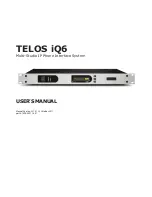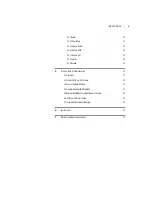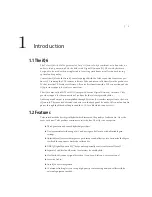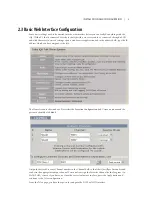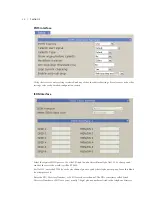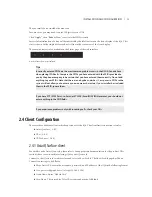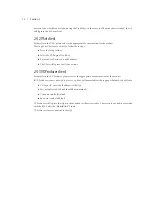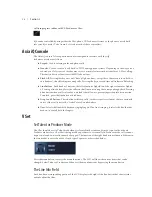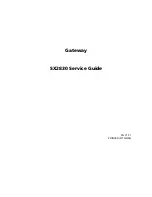
6
| Section 2
Use and to select your country, press (OK). If you do not see your country listed
you should use CTR21 or USA.
The module has six modular jacks. The type of jack will be a six position four pin RJ-11 style. The connec-
tion is to the center two pins of this jack. Note: Unlike our older products, the iQ6 does not have the loop
through provision for POTS lines. The POTS lines used with the iQ6 should be dedicated. The yellow and
black leads (pins 2 and 5) of the modular connectors should be disconnected and insulated.
IMPORTANT
When we say POTS lines, we mean just that – plain old analog loop start telephone lines. A rule
of thumb – if a line works with an analog modem or fax machine, it will work with the iQ6.
Analog Ground Start lines can be used for incoming calls only. However you will need to set
the “Loop Check” option in the Telco menu to “No” for these lines to be recognized properly.
Be careful not to connect the iQ6 to PBX ports intended for proprietary telephones. These
sometimes have voltages that could damage the iQ6.
2.2.2 Integrated Service Digital Networks - ISDN
The iQ6 uses a plug-in module to attach to ISDN. The ISDN module has three modular jacks. In the US
and Canada, the jack type will be a six-position RJ-11 style jack; in the rest of the world the jack type is an
eight-position RJ-45 style.
The correspondence between the interface slot to the system line number for is from left to right when view-
ing the iQ6 from the rear. Therefore, the leftmost jack would be lines one and two. All ISDN BRI circuits
must use the same ISDN protocol setting.
ISDN in USA & Canada: Using the U Interface
Connect the ISDN line from the telephone central office directly to the RJ-11 style U-interface modular jack
on the rear panel. Each module has three jacks and each jack has an associated LED.
IMPORTANT
Remember that the U interface connects to a long telephone line and can convey lightning
surges into the iQ6. Surge protectors intended for analog lines also work to protect
U-interfaces. We recommend that you install one for each line.
U-interface Status LEDs
The small green LED on the ISDN interface card near each U jack indicate the status of the correspond-
ing ISDN circuit. Rapid flashing (about five times per second) indicates a loss of the ISDN at the lowest
(physical) level. If the iQ6 can contact the central office or an active U repeater, the LED will blink slowly
– about once per second. The LED will come on solid when handshaking is completed and all is OK. If these
LEDs do not light continuously once you have connected your ISDN circuits, you may wish to skip ahead to
Section 5.4 for help with troubleshooting the problem.

